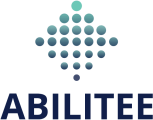Well, I did…
This patient ran into an iron wall and had injured her left shoulder because of that. it took a while for the consultants to correctly diagnose it. At first, it was diagnosed as an AC joint sprain.
After an MRI Arthrogram check, it was concluded that the patient suffers from posterior HAGL.
Of note, this type of injury only accounts for about 1.6% of patients suffering from shoulder pain.
As you all might imagine, there was shoulder instability, and limited range of motion, especially in the Flex and Abd movements. Sensibility along the SSP ligament , LHB ligament and the AC jt. Flex (90), Abd (90), painful neck and thorax.
I decided to combine Dry Needling in the course of treatment, targeting the Rotator cuff, Rhomboids, trapezium, Levator scapula, and muscles along the arm. I have also done some soft tissue techniques and neck and Thorax mobilisation. Following that, I asked the patient to perform exercises to enlarge the ROM (with Terra Band) and also instructed some stability exercises in OKC and CKC; taped the shoulder, and did some neurodynamic stretches.
So why add Dry Needling you might ask? What are the benefits, when there are so many other helpful techniques to apply?
Well, DRY NEEDLING techniques help to directly reach active trigger points that are contributing to shoulder pain and dysfunction. moreover, it helps to reduce overactivity in muscle tone. Thus, relieving muscular pain, allowing for the shoulder muscle to contract efficiently, as well as building strength and stability.
Dry Needling gives us access to push the patient to achieve more, and to do so much more quickly!
Without a doubt, Dry Needling is one of my leading tools for treating shoulder pain and dysfunction.
In a couple of weeks’ time, the patient will undergo HAGL repair surgery. Until then we have work to do, so the preoperational shoulder strength, Rom, and stability would reach their maximum potential.
Join us for the international dry needling course and learn from the best in the field. You won’t be able to recall how you did things prior to learning these techniques!
©2023. Abilitee All Rights Reserved. Dry Needling Course | Temporomandibular (TMD) Course


